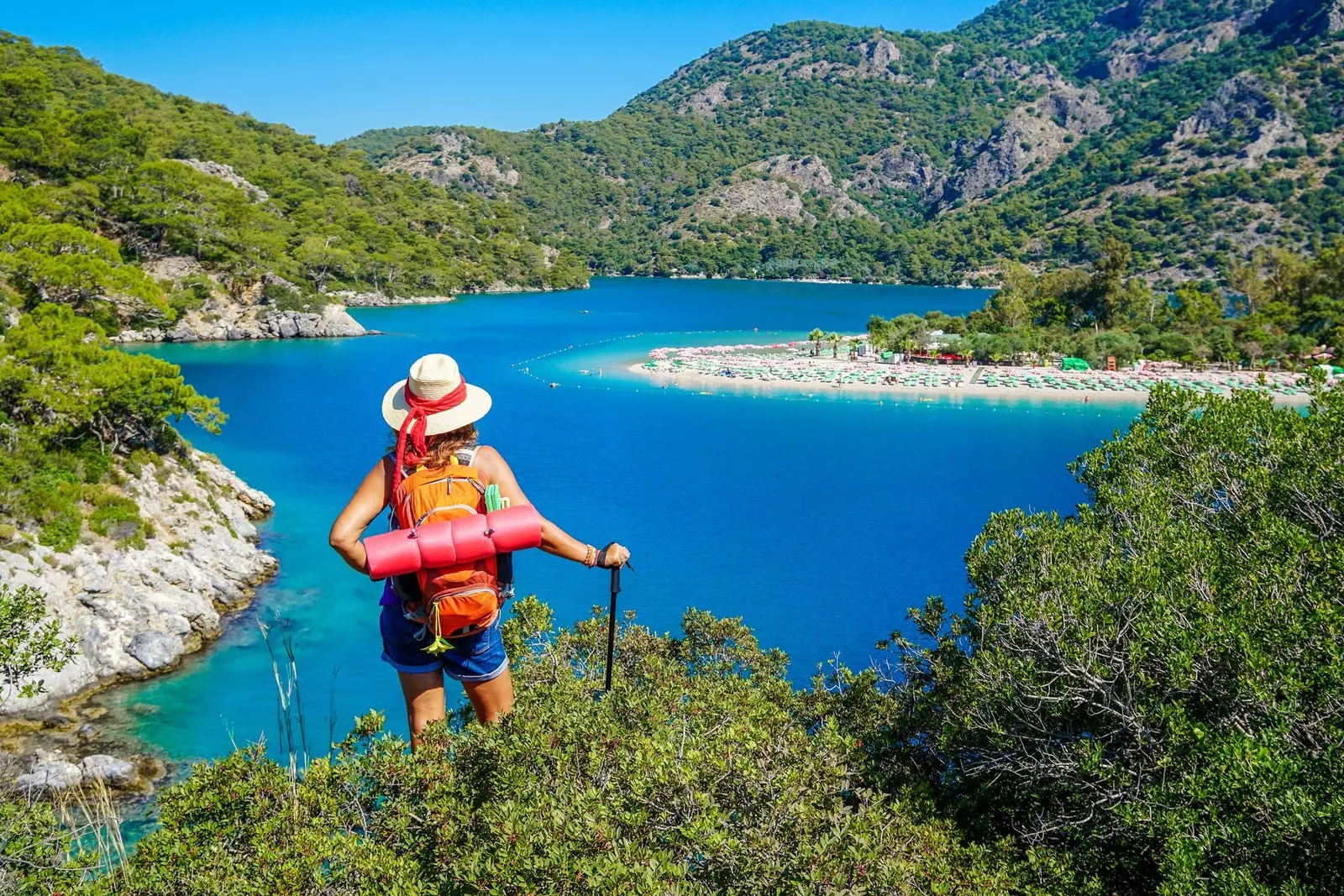
The Lycian Route, one of the most exciting and unknown treks in the world
In southwestern Turkey, between dense pine forests, limestone hills and fishing villages facing dramatic cliffs that end in the Mediterranean, richly ornamented tombs are the main evidence of the existence of one of the cultures of Asia Minor most ignored by historians: the Lycian people.
In the eighth century a. C., the region of Lycia was strategically embedded between the kingdoms of Lydia, Pamphilia and Caria, and consisted of 65 cities scattered on the southern foothills of the Taurus mountain chain.
in them lived a powerful and proud people. The seafaring skills of the Lycians were only matched by their commercial skills and the bravery they displayed on the battlefield.
Despite these virtues, they succumbed, after a heroic resistance, to the attack of the Persian forces of Cyrus II the Great. Seleucids and Romans would come later, but the Lycians, despite being under foreign domination, always maintained a high degree of autonomy.
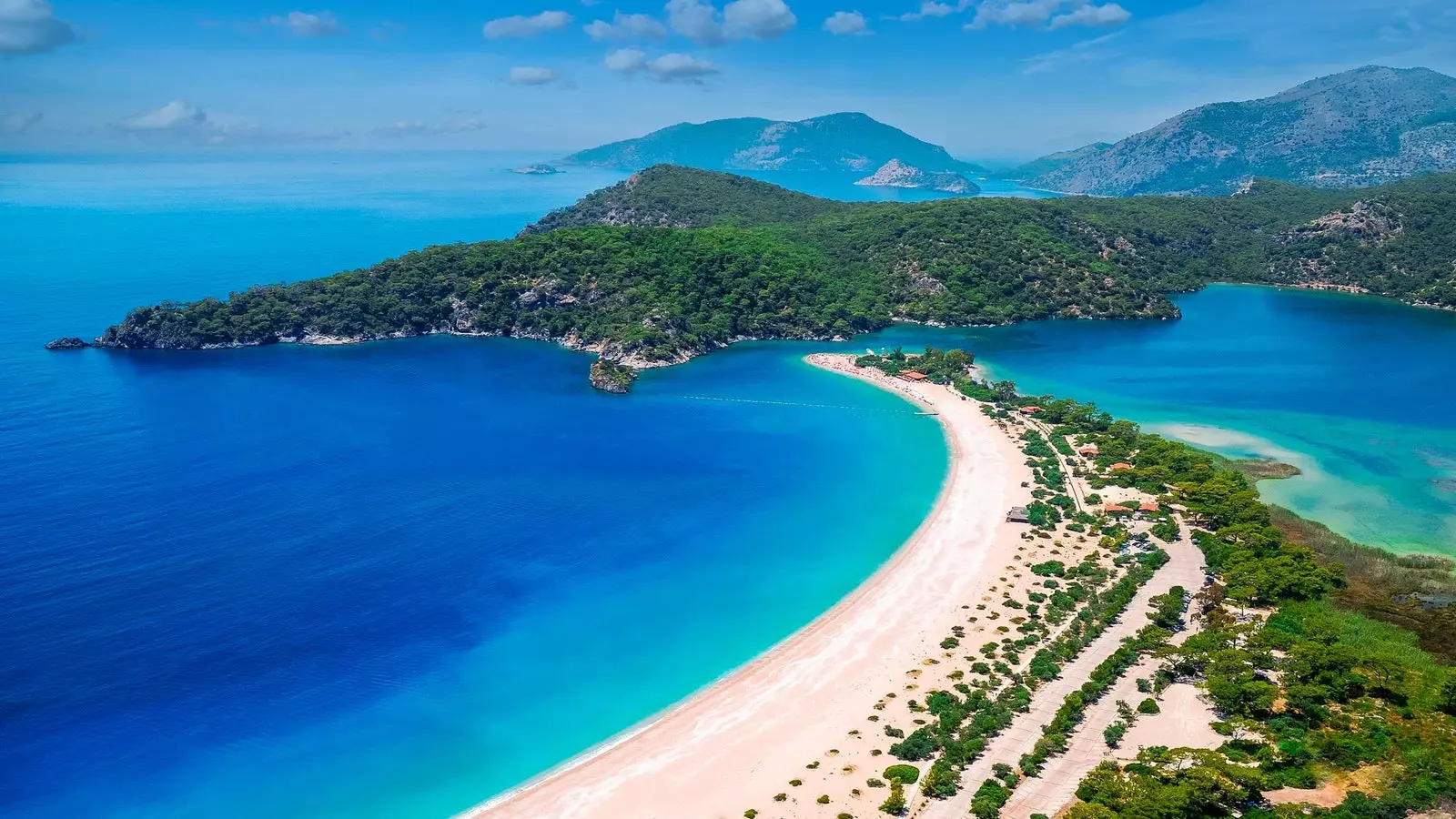
The impressive pine forest leading to Ölüdeniz
THE ORIGIN OF THE LYCIAN ROUTE
In 1999, this proud old town caught the attention of the English Kate Clow. Kate had moved from the UK to Istanbul in 1989 to work as a computer software salesperson.
She was a lover of history and, after moving to Antalya, she began to study the Lycian legacy as she boiled in her mind the need to create the first long-distance hiking trail in Turkey.
That was how, at the gates of the 21st century, the Lycian Route, one of the most exciting and unknown treks in the world.
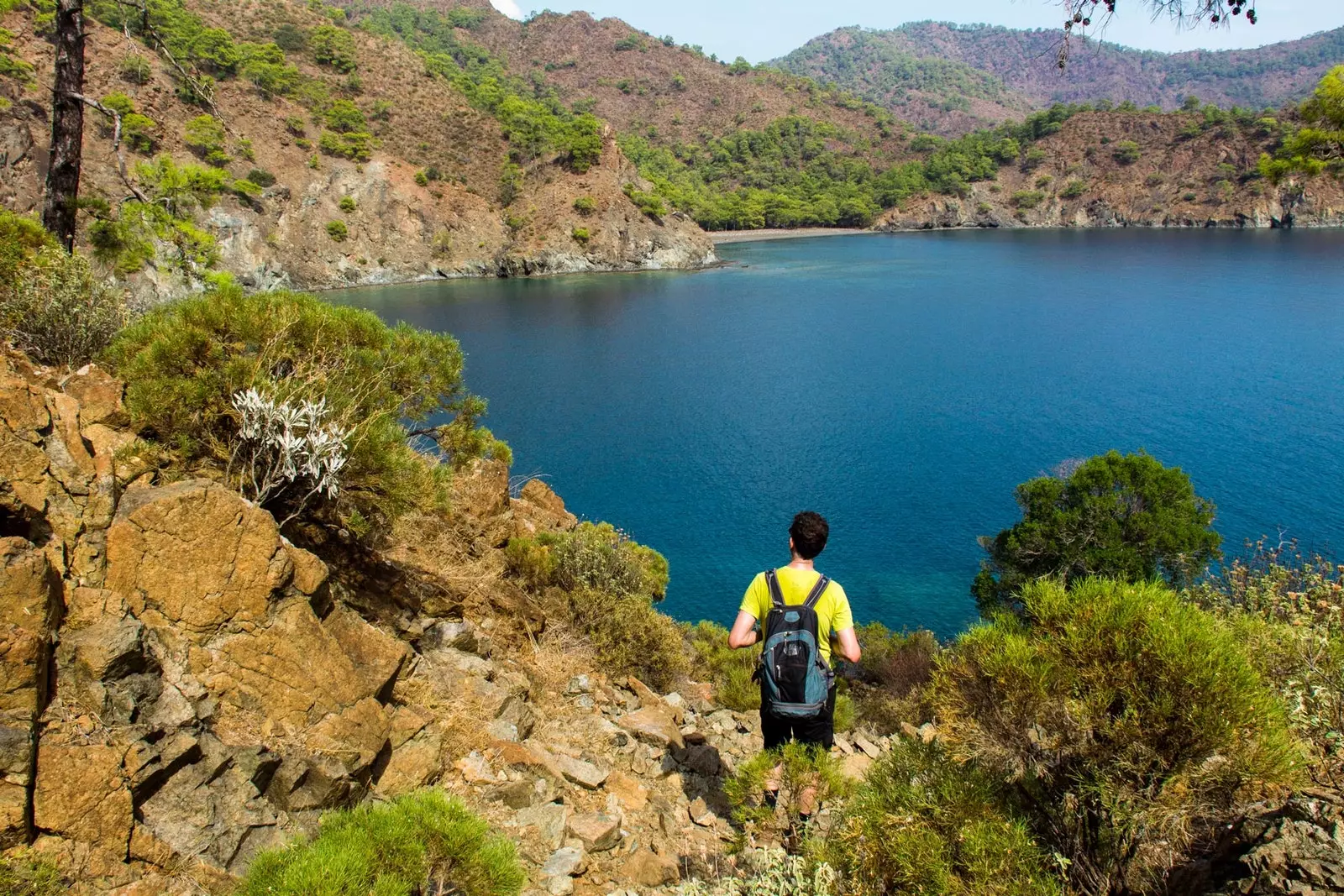
Hiking lovers: this route will make you fall in love
The Lycian Route is a route –entirely signposted by Kate Clow– of just over 500 km which runs through the Turkish provinces of Mugla and Antalya, on the Teke Peninsula. If you want to do it in its entirety, you will need a little over a month.
For this reason, the usual thing is to choose a section and walk for a few days along it.
On the path you will find the thousand-year-old mortuary monuments of the Lycians –in the form of tombs hidden in colorful pantheons that appear both at ground level and in caves carved into rocky hills–, but also remains of Roman, Byzantine or Greek ruins.
However, the Lycian Route is not only suitable for history lovers.
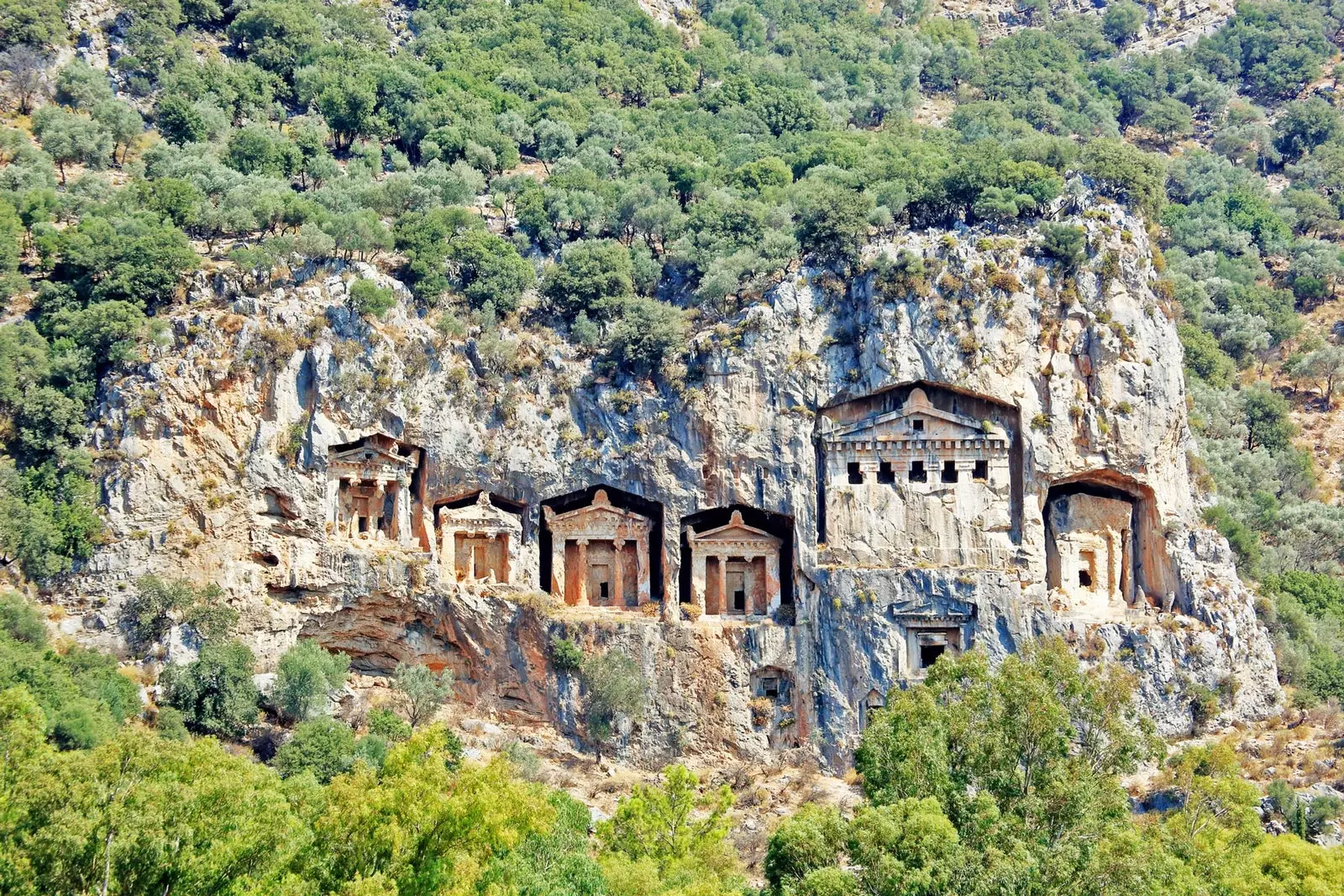
Along the way you will find the thousand-year-old mortuary monuments of the Lycians
HISTORY, LANDSCAPES, TRADITION AND ADVENTURE: THE LYCIAN ROAD BETWEEN FETHIYE AND KALKAN
Although officially, the Lycian Route has its beginning near the town of Ölüdeniz –you will even find a kind of banner announcing it–, there is an extra section that joins it with the town of Fethiye.
Fishing and pleasure boats are gently rocked by the calm waters of Fethiye Harbour. The streets, quiet for much of the year, They come to life in summer with the noise caused by the arrival of local and European tourists.
In the upper part of the town, a set of Lycian tombs are carved into the wall of a hill. The treasures found in them are exhibited in the small museum of the town, which hardly receives visitors.
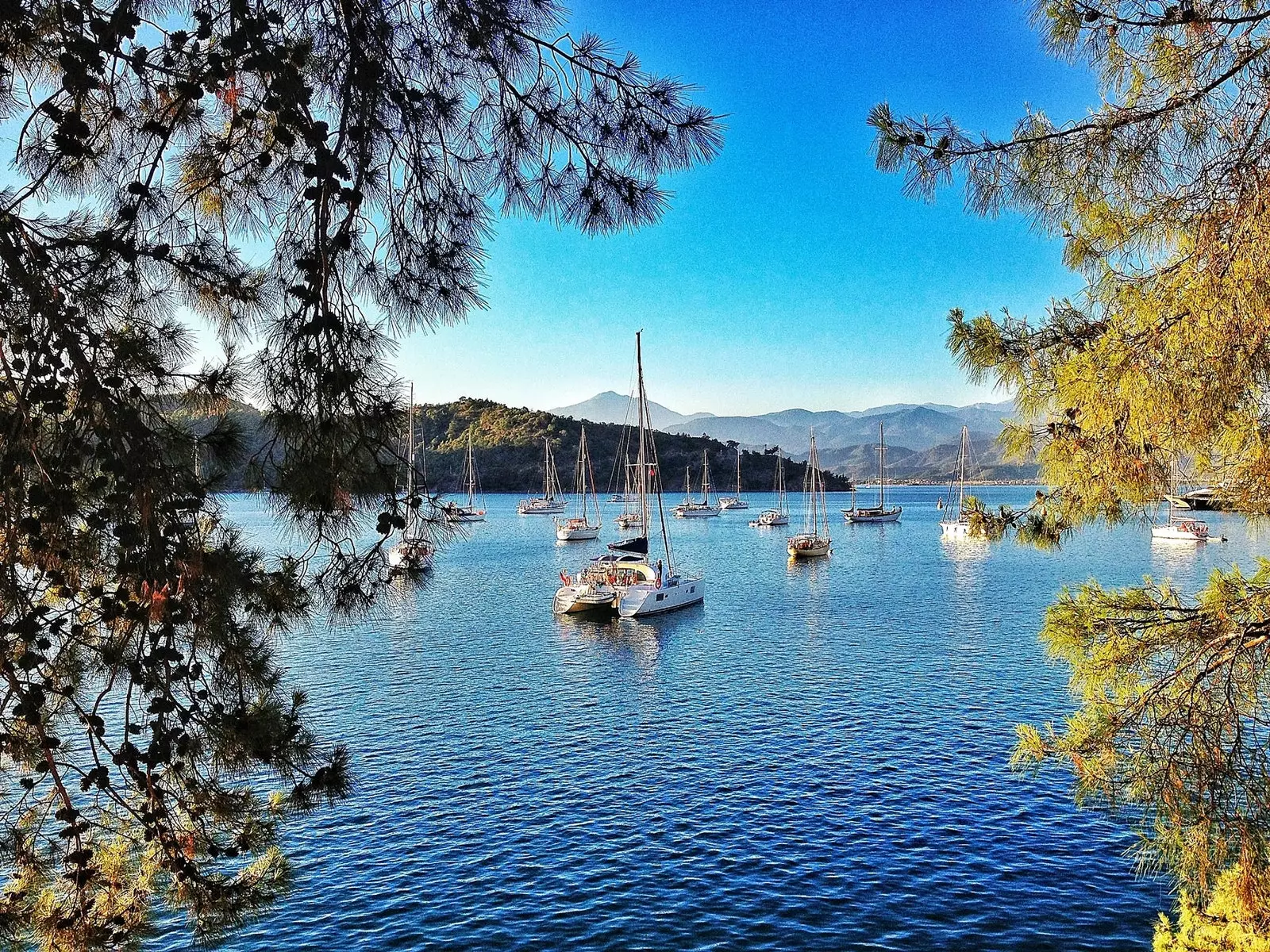
The boats are rocked in Fethiye
Loaded with backpack and tent, questions to the local people about the beginning of the path of the Lycian Route. Nobody knows how to answer. Even the map they have at the Fethiye tourist office is vague and unusable.
In the end, it is some foreign neighbor (many English people live here) who gives you a valid clue to start the Lycian Route. You know you are on the right path by finding the characteristic mark – a white stripe on a red stripe – painted on a rock on a forest path.
The lack of knowledge that everyone seems to have of this hiking treasure, far from discouraging you, makes you anticipate an adventure like no other.
You're right. You always camp alone and on the route you only come across hikers who spend the day. You feel like a real explorer.
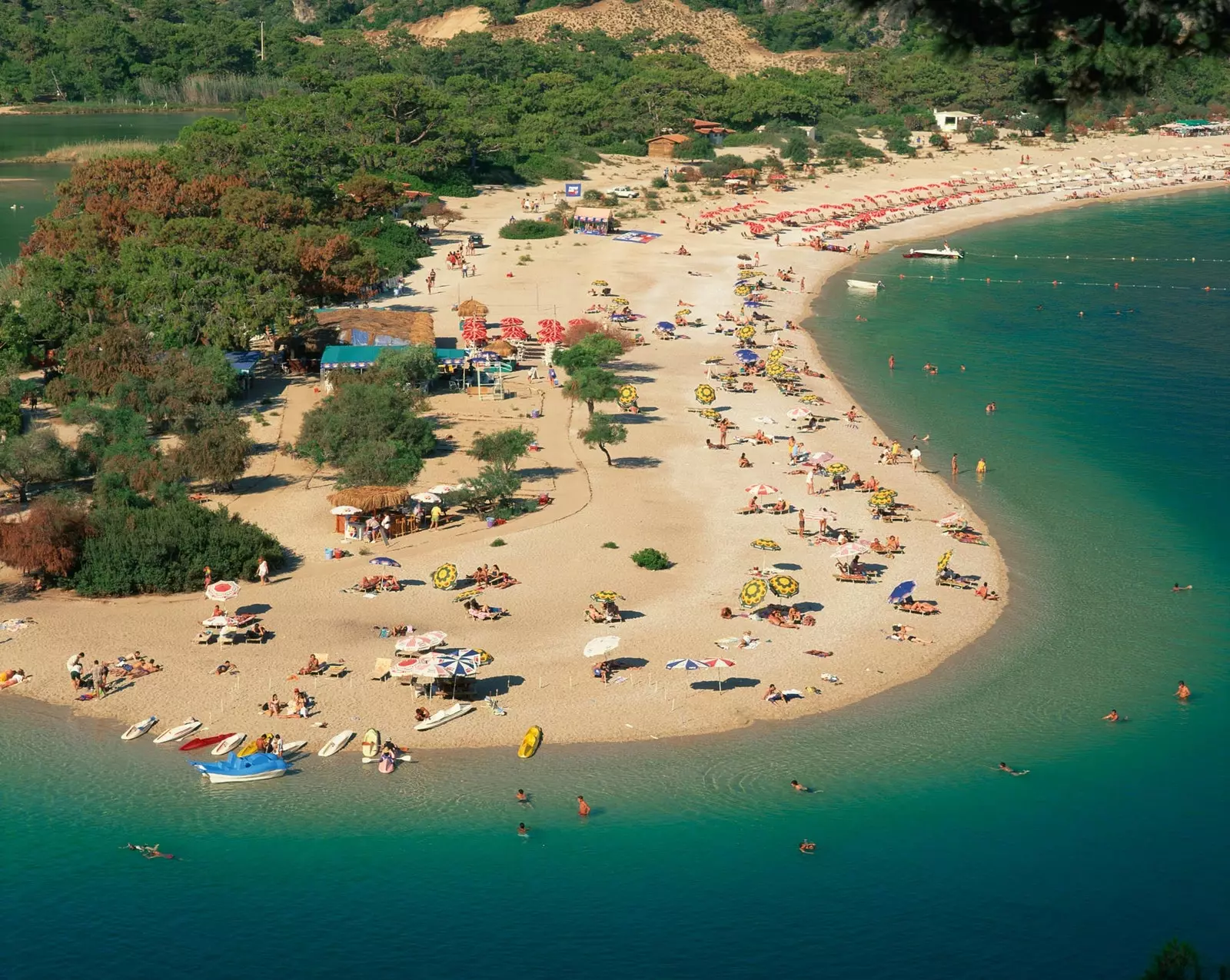
The famous Lagoon Beach, in Ölüdeniz
The itinerary takes you to discover ghost towns, such as Kayaköy. Empty cement skeletons show that Hundreds of Greek families lived here at the beginning of the 20th century. They had arrived fleeing the Turkish-Greek war and would be used as currency (by Turkish prisoners) after the end of the First World War.
From the deathly silence of Kayaköy you pass to the hubbub of the touristy Ölüdeniz, but for this you must traverse a path that runs through green pine forests, mountains that leave their mark on your legs and viewpoints that are burned into your memory.
Because before you appear gray, ocher and green cliffs that sink into a sea with so many shades of blue that you don't even know how to name them.
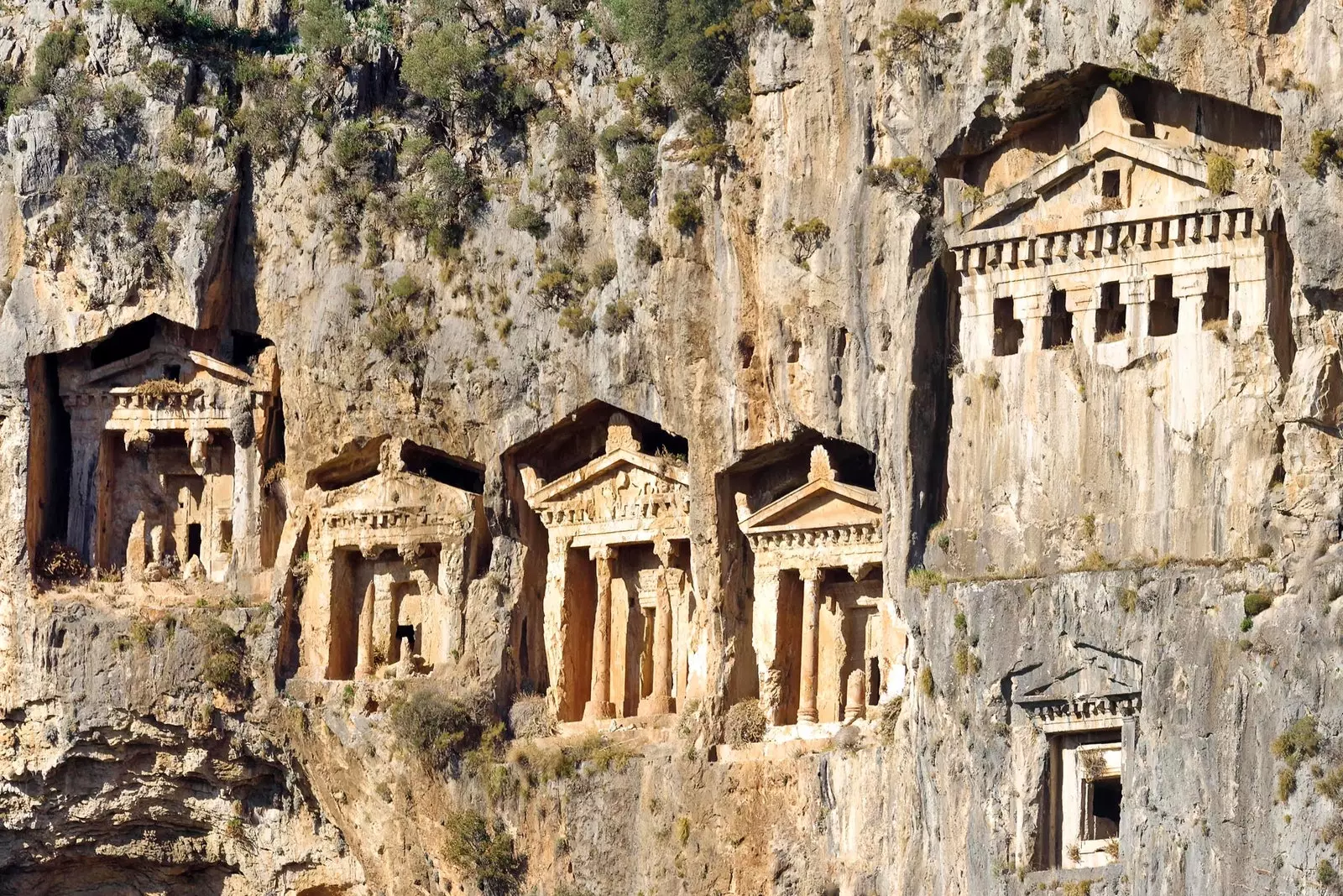
Telmessos necropolis in Fethiye
Also, the fact that wild camping is allowed in Turkey allows you to choose the frame in which you want to wake up every morning. Nature offers you so many beautiful alternatives that it is difficult to choose.
The city of Oludeniz , which extends along a beach with crystal clear waters and the famous Blue Lagoon, has been taken over by British tourists so you find a higher density of pubs than in London and the best thing to do is run away after eating something and taking a bath on the beach.
An original way to contemplate the beautiful sight of Ölüdeniz is from the air. Here you will find ** the paragliding take-off runway that offers the greatest drop in all of Europe.** An unforgettable sensation.
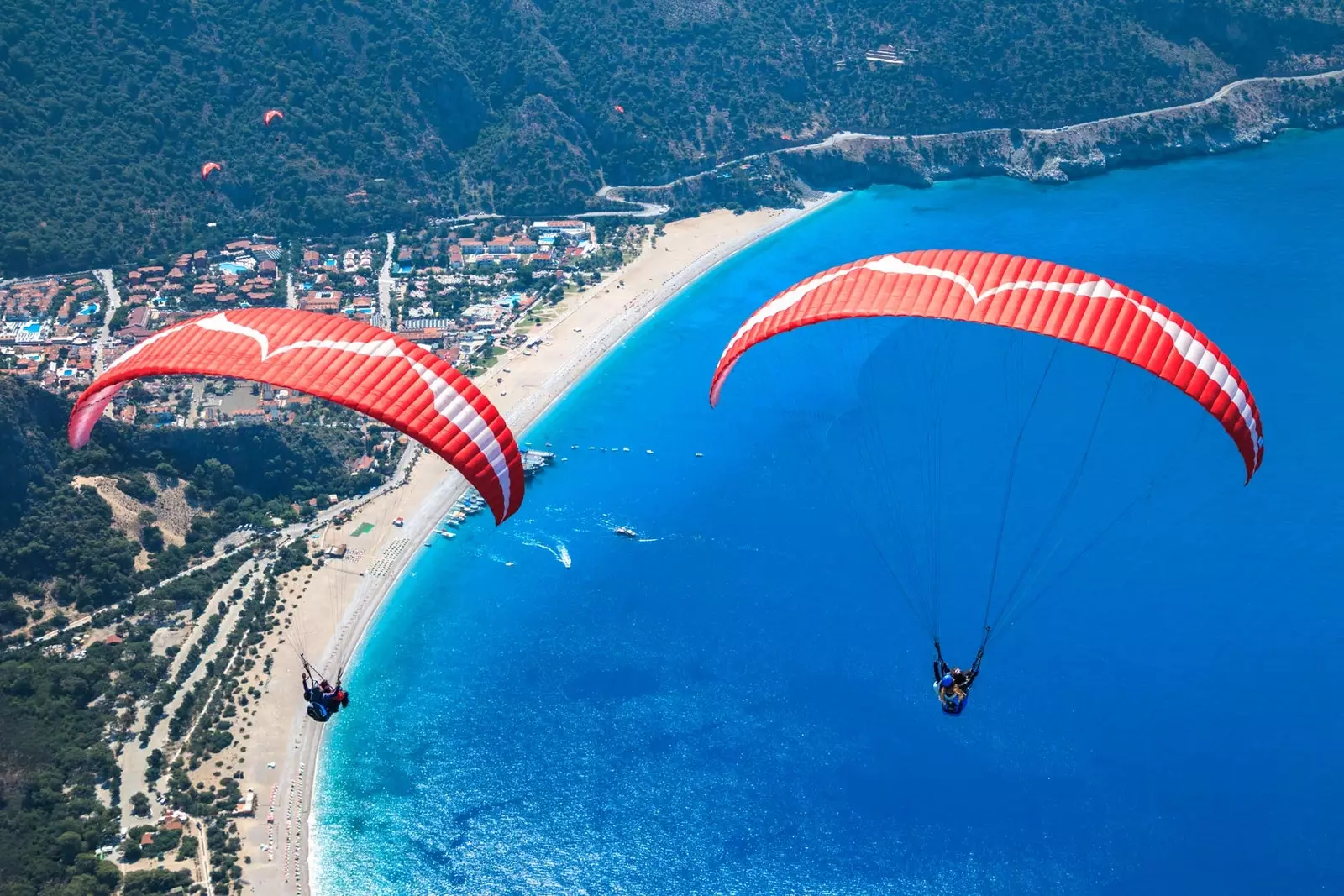
The beautiful picture of Ölüdeniz from the air
The kilometers are accumulating in the legs and the back, while you go up and down mountains, almost always with the Mediterranean on the horizon, trying to cheer you up.
That's how you get to the ancient ruins of Patara, a prosperous maritime and commercial city of Lycia in which he was born Saint Nicholas of Bari.
A large amphitheater with capacity for 5,000 people fights its fantastic 18 km long beach for prominence. Remains of Byzantine basilicas, a colonnaded promenade, and Lycian tombs are other of the archaeological treasures of Patara.
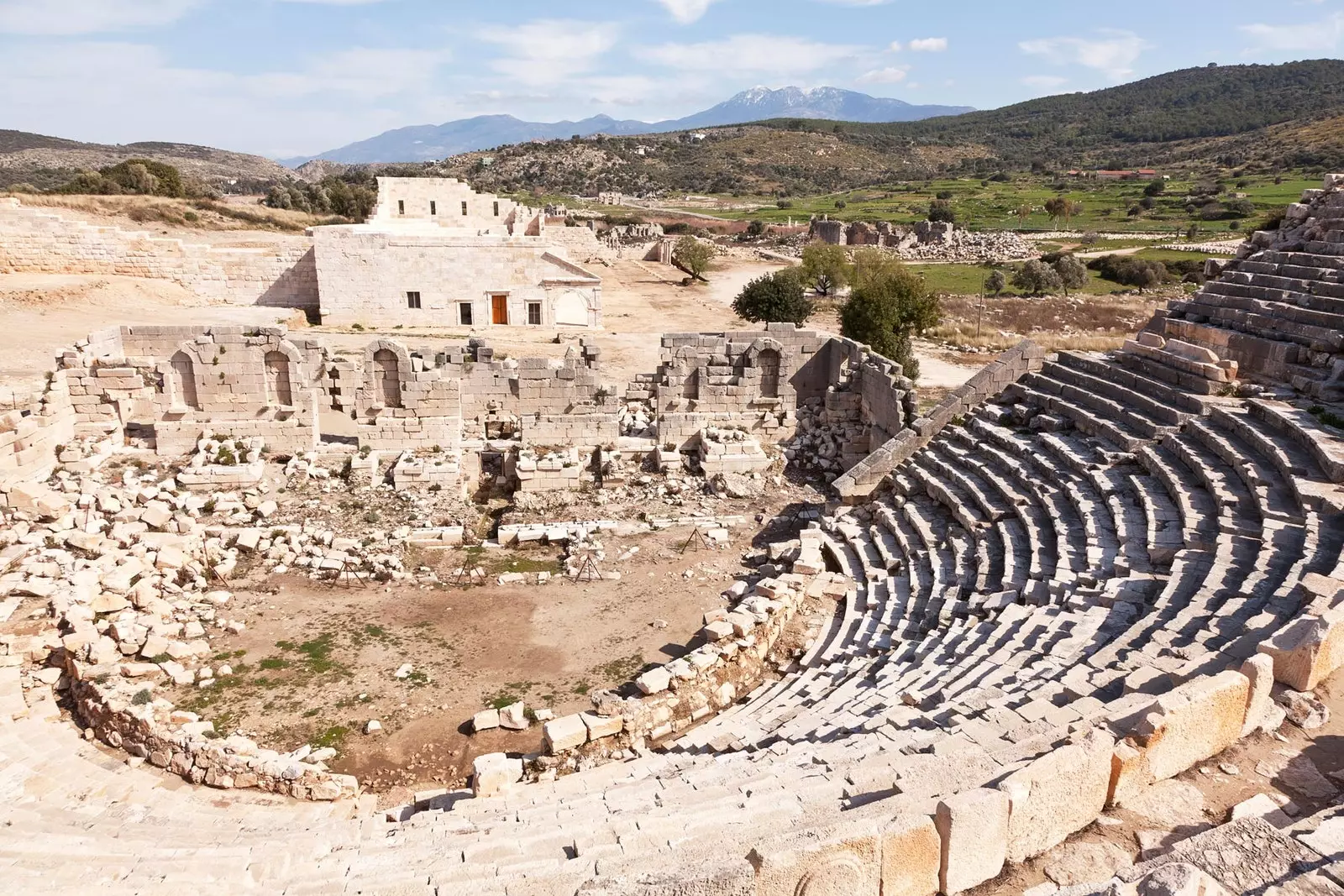
The ancient ruins of the Patara theater
Further away, Kalkan houses perch on a green hill surmounted by the tomb of the Lycian king Amyntas, which looks out over the sea.
This vacation spot is perfect to get some rest, before take a dolmus (collective vans dedicated to local transport) back to the starting point.
Until Antalya, there are still surprises like the beautiful Kas, the mythical Mount Olympos or the bay of Kekova, perfect to explore it by schooner or kayak.
The Lycian Route catches you and As you look out the window, you know you'll be back.
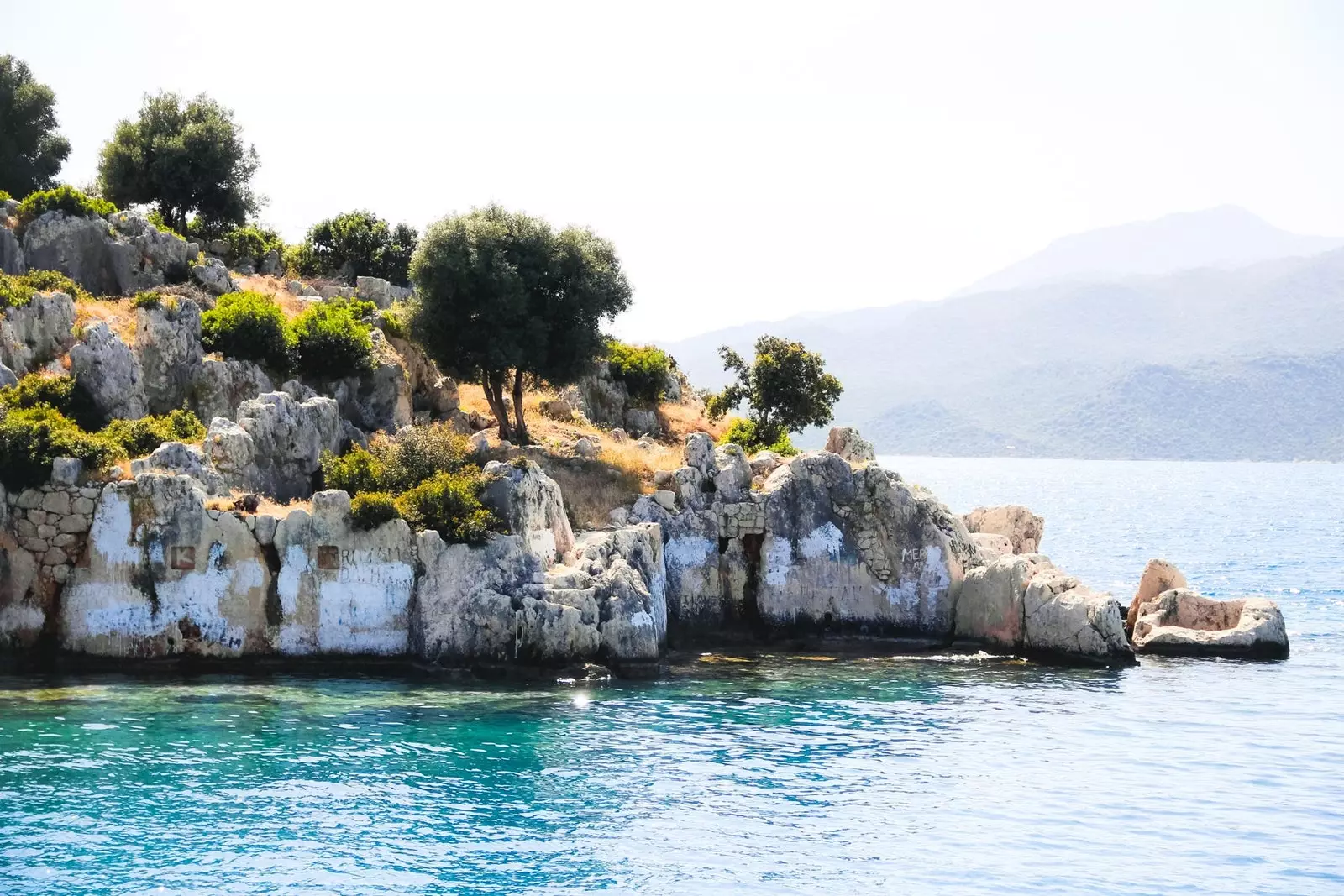
Kekova and its crystal clear waters
